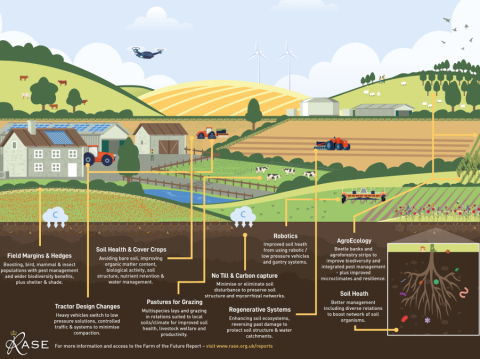Download the infographic below.

This RASE Infographic describes how you can effectively manage soils to decarbonise and improve biodiversity on your farm.
Recommended Content
Connected Content
In 2015, the UK pledged to be Net Zero by 2050, with the NFU striving for the more ambitious target of 2040. Net Zero is achieved when the amount of greenhouse gases (GHG) emitted is balanced with those removed from the atmosphere. This helps to combat climate change and reduce global warming.
Soil is an essential natural resource for all farmers. Over recent years many initiatives have sought to provide information and advice on soils and Soil Health, notably AHDB Great Soils.
The intricate web of relationships between physical, chemical and biological soil components underpins crop and livestock health and productivity.
The UK Government has set a Net Zero target for 2050. Land use and management has a key role to play in this, with the NFU setting an even earlier target of 2040.
There is a lot of interest in soil carbon currently, due to the opportunity to store and sequester carbon in soil. It is also vital for soil health, forming part of soil organic matter.
Biodiversity encompasses all the variety of life on Earth from genes to species, populations, communities and ecosystems. In ecological and environmental sectors, we mostly refer to the biodiversity of plant and animal communities within particular habitats.
The key GHGs for agriculture that contribute directly to climate change are: Carbon dioxide (CO2) Methane (CH4) Nitrous oxide (N2O) All these GHGs are often grouped under the umbrella term ‘carbon’.

